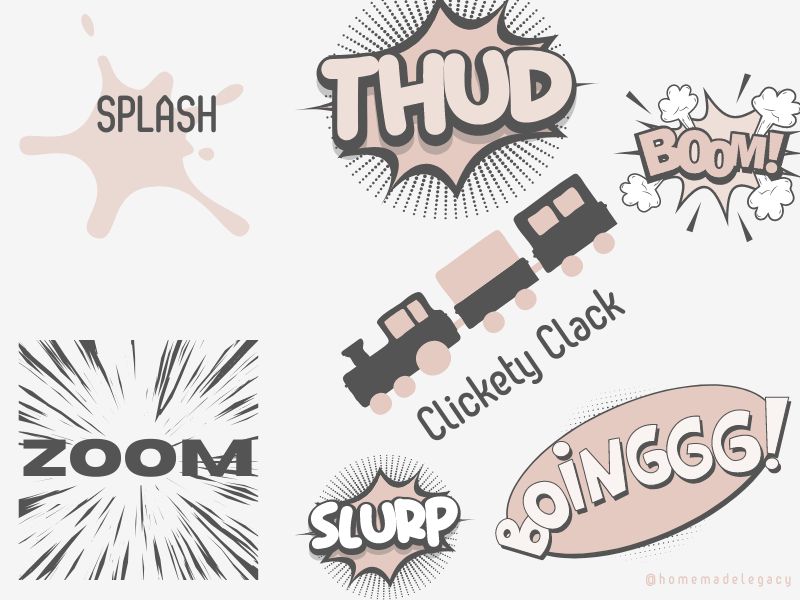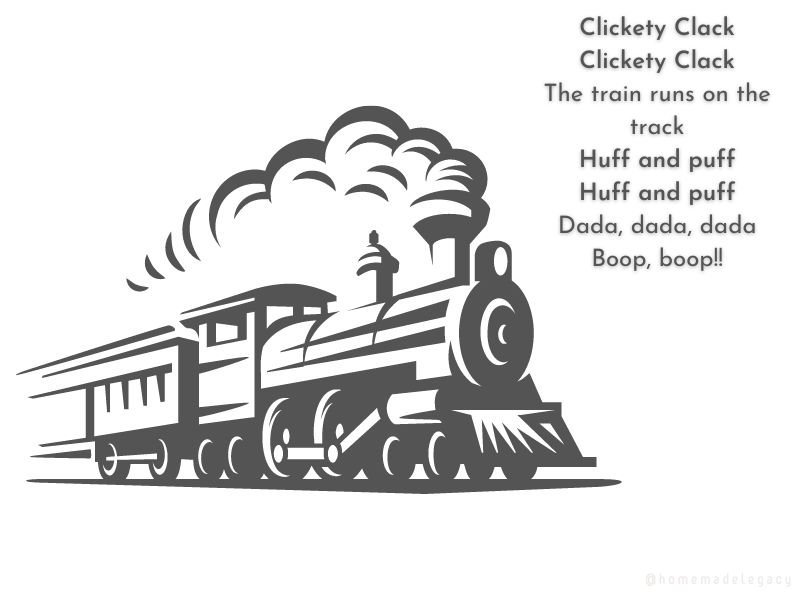An idea popped up and buzzed in my mind as to how I should start my article on Onomatopoeia for kids. I started scribbling fast as so many ideas came gushing through my brain. I’m sure it’s going to be a blast!
If you are wondering what this overly excited writer is trying to say, oh well let me tell you. I am going to talk about Onomatopoeia today, and it’s just me being so thrilled to talk about one of my favourite literary devices. Surely, the word “Onomatopoeia” itself is a bit fancy and dramatic, don’t you think so?
The meaning of this word is the process of creating a word that mimics a sound and using it to describe that sound.
A bunch of silly and fun words may come to mind now. But my favourite onomatopoeic words are Boom, Plop and Swirl 🙂
Ok. Let me get serious now.
Have you ever wondered why onomatopoeic words are used ?
The simple answer is that it can give LIFE to your words. If you are a writer, orator or just someone who is looking for words that appeal to others, simply learn more about Onomatopoeic words.

As I believe, this literary technique has a magical ability to make your writing cinematic and closer to a real-life experience. You don’t have to watch it on a screen, just reading these magical words can help you achieve that.
Onomatopoeic Expressions For Everyday Use
- She tossed and turned the meat until it was golden brown.
- He burst through the door and slammed it.
- The little girl was unhappy when her brother popped her balloon.
- Everyone burst into laughter as the clown started dancing with silly dance moves.
- Mom told me to slowly slurp the soup as it was hot.
- He munched and crunched his cookies until his tummy couldn’t hold anymore.
- He had a big thud and banged his head against the wall.
- There has been a buzz among the neighbours that Charlie is going to leave the country.
- The creaking doors are really annoying and getting on my nerves, so I dripped some oil into the hinges.
- The baby’s rattle toys made a clipperty– clipperty sound.
- Blood gushed from his wound, so we had to rush to the hospital .
- He mumbled some words in despair as he knocked his head on the door.
Onomatopoeia for kids – How it’s used in Children’s Literature
“It sizzled and fried, and drops of fat dripped off it and blazed on the coal”
– Little House in the Big Woods by Laura Ingalls Wilder
“At noon all the big icicles along the eaves of the little house quivered and sparkled in the sunshine and drops of water hung trembling at their tips”
If you pay close attention to these Onomatopoeic words, ,you may notice that it’s not only the sound effect that’s doing the work. An array of literary devices including personification (Attributing human qualities to inanimate objects), visual imagery and auditory imagery combine to bring these words to life. If you have read the Little House series, you know how well the writer speaks to the heart of the reader using a variety of literary devices including onomatopoeia.
Ex: sizzled- Onomatopoeia and visual imagery
Trembling- Onomatopoeia and personification
“As full-grown lambs loud bleat from hilly bourn
-To Autumn by John Keats
Hedge-crickets sing, and now with treble soft
The red-breast whistles from a garden croft
And gathering swallows twitter in the skies”
In this poem “To Autumn”, John Keats uses onomatopoeic words like bleat, whistle and twitter to create an authentic experience of an autumn day. When I read this stanza, the bleating of a lamb, the whistling of a red-breast and the twittering of swallows keep resonating in my mind letting me experience a perfect autumn day in the countryside. Isn’t it just wonderful?
“And then, in a twinkling, I heard on the roof
The prancing and pawing of each little hoof
As I drew in my hand, and was turning around,
Down the chimney St. Nicolas came with a bound“
In this narrative poem, “The Night Before Christmas” by Clement Clarke Moore uses onomatopoeia to bring to life the action-packed moment of St. Nicolas’s arrival. It’s done so well that we notice the whole stanza buzzing with excitement. The right word in the right place, that’s all it takes!
“The streams and ditches bubbled and chattered with rushing water” This line from the story “Charlotte’s Web” by E.B White gives life to streams and ditches and we can visualise swollen streams full of gushing water as the winter comes to an end. The sound of the strong movement of water reverberates through the reader’s ears as they read this line.
“She was making her first motions of nesting. First she squatted down in the place she had chosen. Then she twisted round and round, tamping the earth with her broad webbed feet, hollowing it out to make it like a saucer. Then she reached out and pulled twigs and grasses toward her and dropped them at her sides and under her tail, shaping the nest to her body”
The above quotation from the story “The Trumpet of the Swan” by E.B White portrays the process of building up a nest by a swan. The Onomatopoeic words used by the writer help us visualise the whole process and make the reader glued to the story.
Onomatopoeic words are commonly found in nursery rhymes too. Because they have an amazing ability to bring joy to little ones.

Clickety Clack
Clickety Clack
The train runs on the track
Huff and puff
Huff and puff
Dada, dada, dada
Boop, boop!!
This song from Peppa Pig is a favourite song in our home. The sounds of a train are highly entertaining and kids love to act them out.
Related Articles
17 benefits of reading for kids
How to pick best bedtime stories for kids
Onomatopoeia for kids – Conclusion
As you can see above, LIFE HAPPENS and it’s great when we are armed with words that give the exact same feeling/meaning that we want others to feel.
Thanks to onomatopoeia, we can safely retain the feeling and effect of different animal sounds, commotion, movements, collisions in a more effective way. Because language speaks not only to our ears, but also to out hearts. So feelings are very much involved in this complex process.
Expressing the same sentiment we want others to feel isn’t all that easy. But with literary devices like onomatopoeia, you can absolutely nail it!!
Let us know what your favourite Onomatopoeic words are 🙂

Leave a Reply